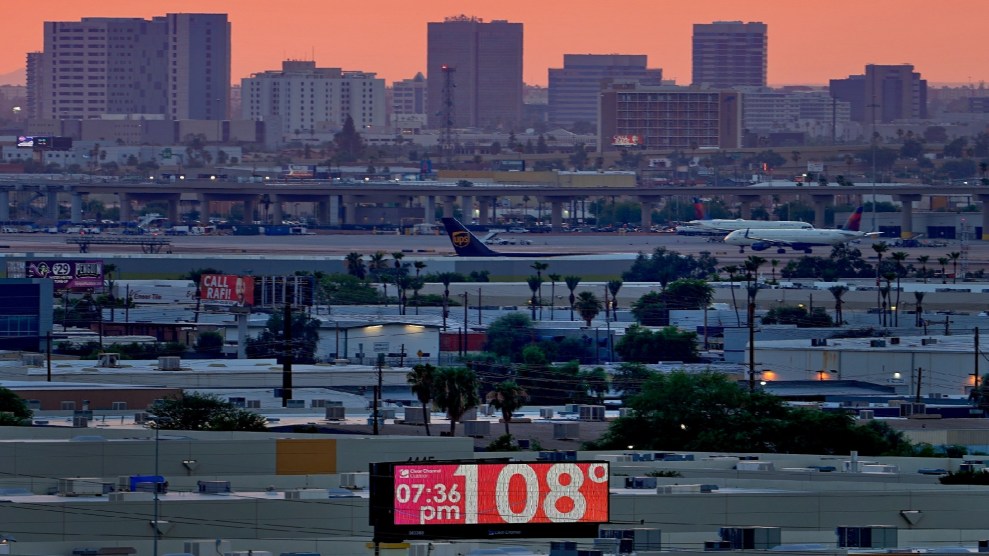I’ve been plenty hard on Alaska Republican Sen. Lisa Murkowski for her problematic stance on climate change. She wants credit for acknowledging that climate change is a problem, but at the same time has proved the most effective and aggressive senator when it comes to undermining actual action on the issue.
After Tuesday’s unexpected upset by tea party candidate Joe Miller, Murkowski might be on her way out (though there’s talk of a third-party run). You have to wonder what this means for the climate (and, thus, the fate of poor melting Alaska). While Murkowski acknowledged that the changing climate imperiled her state, Miller’s not so sure there’s a warming issue at all. While plenty of Republicans acknowledge that the planet is getting hotter but insist it’s not because of human activity, Miller thinks the problem “may not even exist.” He actually thinks that “the trend in more recent years has been towards cooler temperatures” (which is, of course, just not true).
Here’s the full explanation from his issues page:
Alaskans face some of the highest energy costs in the nation, despite being near tremendous natural resources. We need to power our homes and businesses at a reasonable cost. For this and other reasons, I strongly oppose the unconstitutional Cap and Trade legislation. The science supporting manmade climate change is inconclusive. Nothing typifies that more than the metamorphosis in terminology being used. A few years ago, the dire warnings coming from Al Gore and others all spoke of “Global Warming.” The term “Greenhouse Gas” itself conjures up images of the unnatural heat found in a manmade environment. However, since the trend in more recent years has been towards cooler temperatures, those (like Senator Murkowski and others) pushing for cap and trade and other carbon emission reducing legislation have had to change their terminology to “Climate Change.” Should we take drastic measures to combat something that may not even exist, burdening our already struggling economy with billions in new taxes and regulations? Even President Obama said the cost of cap and trade legislation to businesses and individuals will be steep. We need good science, and a long-term climate trajectory before we jump in and make decisions that will profoundly affect the lives of ordinary Alaskans. California has already passed a Cap and Trade law, which has made it even more expensive to do business there and has increased unemployment.
One of the reasons Murkowski has been such an effective player in the climate debate is because she’s able to play both sides. She appears to care about the issue, but has done more to undermine action than anyone else in the Senate. Unlike, say, a James Inhofe, the senator from Oklahoma, who is basically ignored by most decision-makers, she’s regularly invited to White House meetings on the subject and Senate negotiating sessions. I’m guessing Miller’s approach would not be nearly as savvy. So while his actual beliefs about climate are far more absurd, he might actually pose less of a threat in practice. But maybe that’s overly optimistic.










